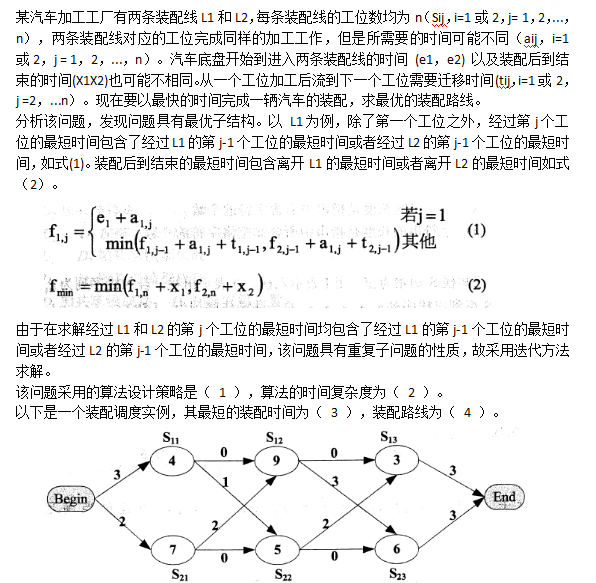AclienthastheneedtorebootoneoftheirVirtualIOServers.Whatcommand(s)wouldberuntolisttheclientsthataredependantonVirtualIOServerdiskandnetworkresources?()A.lsmap-all-netB.lsclient-disk-netC.lsdev-virtual-clientD.lsmap-all;lsmap-net
题目
AclienthastheneedtorebootoneoftheirVirtualIOServers.Whatcommand(s)wouldberuntolisttheclientsthataredependantonVirtualIOServerdiskandnetworkresources?()
A.lsmap-all-net
B.lsclient-disk-net
C.lsdev-virtual-client
D.lsmap-all;lsmap-net
相似考题
更多“AclienthastheneedtorebootoneoftheirVirtualIOServers.Whatcommand(s)wouldberuntolisttheclientsthataredependantonVirtualIOServerdiskandnetworkresources?() ”相关问题
-
第1题:
main()
{ char *s2=“I love China!”,**s1=&s2;
char *s3,c,*s4=“w”;
s3=&c;
*s3=‘H’;
s2=s2+2;
printf(“%s\t%c\t%s\t%c\n”,s2,*s3,s4,**s1);
}
正确答案:
6.love China! H w l
high byte:12
low byte:34
word value:1274
the result:3ca8
-
第2题:
非单位负反馈系统,其前向通道传递函数为G(S),反馈通道传递函数为H(S),当输入信号为R(S),则从输入端定义的误差E(S)为 ()
A.E(S)=R(S).G(S)
B.E(S)=R(S).G(S).H(S)
C.E(S)=R(S).G(S)-H(S)
D.E(S)=R(S)-G(S)H(S)
系统的闭环传递函数为 系统的脉冲响应为 =10e -5t sin5t$对于单位负反馈系统,其微分方程可写成 对上式取拉氏变换,考虑初始条件得 s 2 C(s)-sc(0)- (0)+10[sC(s)-c(0)]+50C(s)=50R(s) 带入初始条件得 对上式取拉氏反变换,得到初始条件不为零时系统的响应如下 c(t)=c 1 (t)+c 2 (t) 其中c 1 (t)为零初始条件响应分量 c 1 (t)=10e -5t sin5t c 2 (t)为非零初始条件响应分量 =e -5t cos5t+e -5t sin5t =e -5t (cos5t+sin5t) 得到初始条件不为零时系统的响应 c(t)=c 1 (t)+c 2 (t)=10e -5t sin5t+e -5t (cos5t+sin5t)$当r(t)=1(t)时的响应 ω n =7.07, ξ=0.7, -
第3题:
非单位负反馈系统,其前向通道传递函数为G(S),反馈通道传递函数为H(S),当输入信号为R(S),则从输入端定义的误差E(S)为 ()。
A.E(s)=R(s)G(s)
B.E(s)=R(s)G(S)H(s)
C.E(s)=R(s)—G(S)H(s)
D.E(s)=R(s)G(S)—H(s)
系统的闭环传递函数为 系统的脉冲响应为 =10e -5t sin5t$对于单位负反馈系统,其微分方程可写成 对上式取拉氏变换,考虑初始条件得 s 2 C(s)-sc(0)- (0)+10[sC(s)-c(0)]+50C(s)=50R(s) 带入初始条件得 对上式取拉氏反变换,得到初始条件不为零时系统的响应如下 c(t)=c 1 (t)+c 2 (t) 其中c 1 (t)为零初始条件响应分量 c 1 (t)=10e -5t sin5t c 2 (t)为非零初始条件响应分量 =e -5t cos5t+e -5t sin5t =e -5t (cos5t+sin5t) 得到初始条件不为零时系统的响应 c(t)=c 1 (t)+c 2 (t)=10e -5t sin5t+e -5t (cos5t+sin5t)$当r(t)=1(t)时的响应 ω n =7.07, ξ=0.7, -
第4题:
请作答第4空: A.S11→S12→S13
A.S11→S12→S13
B.S11→S22→S13
C.S21→S12→S23
D.S21→S22→S23答案:B解析: -
第5题:
9、下面的文法中,哪些是二义的
A.G(S): S → SS | (S) | ()
B.G(S): S → iSeS | iS | i
C.G(S): S → SaS | SbS | cSd | eS |f
D.G(S): S → S+S |S*S | i | (S)
fafbf是文法G[S]的一个句子,并且有两个不同的最右推导。 (1)S=>SaS=>SaSbS=>SaSbf=>Safbf=>fafbf (2)S=>SbS=>Sbf=>SaSbf=>Safbf=>fafbf 因此说明此文法有二义性。
